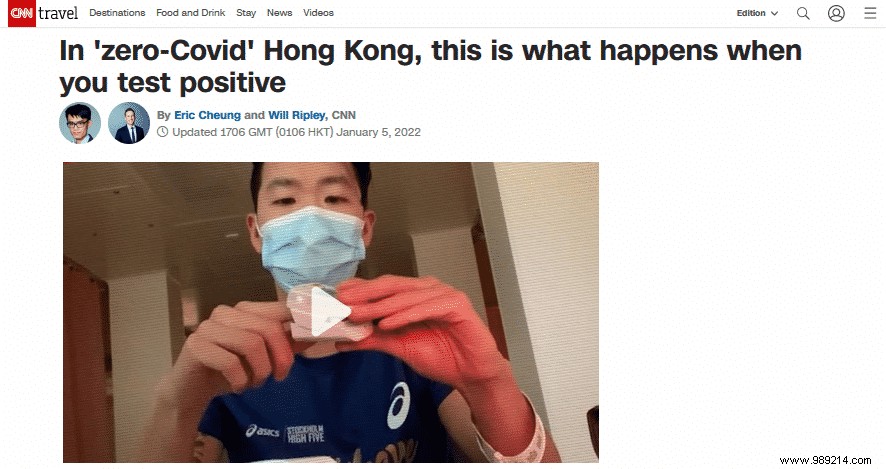Like a few other territories, Hong Kong has adopted a "zero Covid" strategy. In other words, local authorities are not joking at all with the isolation measures. A young man freshly arrived in Hong Kong from the United Kingdom testified for a major American channel.
According to official figures since the start of the Covid-19 pandemic, the territory of Hong Kong (China) has totaled less than 13,000 cases for barely more than 210 deaths . It is therefore a region relatively spared from the coronavirus. Remember all the same that the United States remains the most affected country with nearly sixty million cases for more than 830,000 deaths. Hong Kong has, however, reinforced its "zero Covid" policy with the appearance of the Omicron variant more than a month ago.
In an article published by the American channel CNN on January 5, 2022, young Darryl Chan testified about his care upon his arrival in Hong Kong from the United Kingdom on December 19, 2021. It must be said that the local authorities are quite cautious about travelers from the United Kingdom because of the risk posed by the new variant. Nevertheless, Darryl Chan performed several tests and presented a complete vaccination schedule on his departure from London.

Upon arrival at Hong Kong airport , Darryl Chan was forced to perform a new test . The result of this same test showed "preliminary positive", meaning that he had to undergo further examinations. He was then transferred to a closed area where there was only one bed. No less than thirteen hours later , an ambulance transported the young man to the nearest hospital. To his amazement, the test the doctors performed came back positive for the Omicron variant.
According to local protocol, anyone positive for SARS-CoV-2 (any variant) should be placed in complete isolation. The young man therefore spent ten days under close supervision at the hospital and spent all of his time in a bedroom. Every day, the routine was the same:at 8am, patients have to take their vitals (temperatures, etc.) and meals are also delivered at fixed times.
This routine is particularly heavy, because the time is extremely long and it is impossible to go out to get some fresh air or do some exercise. In addition, discharge from the hospital can only be done after two negative tests. Even after these tests, the ordeal does not stop there. Indeed, the patient will have to spend an additional fourteen days in an isolation center before being able to fully regain freedom of movement.